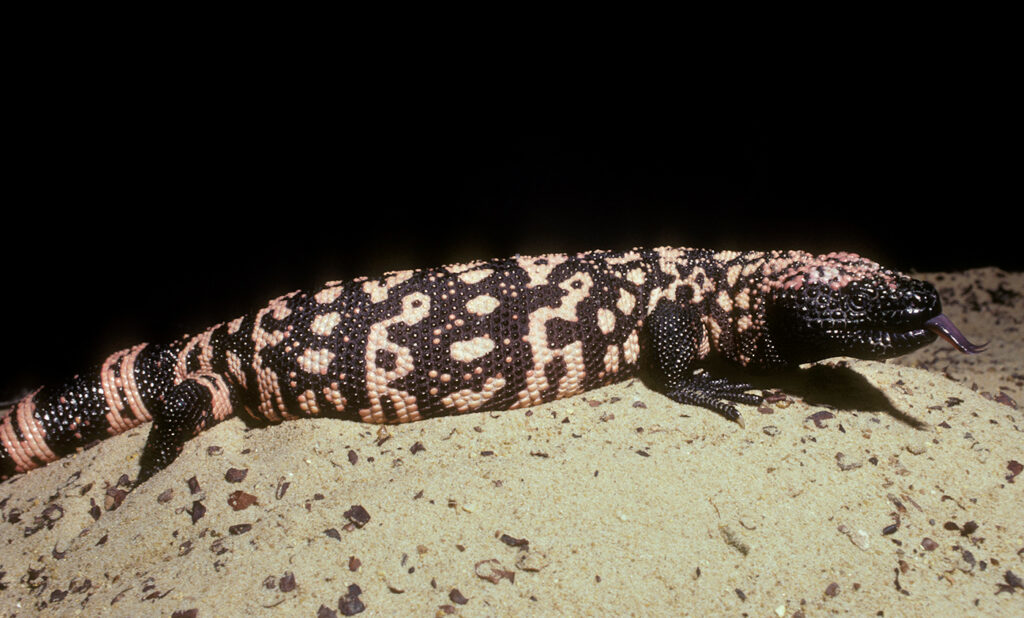When you hear the words “venomous reptiles‟, all the thoughts that rush into your mind are about snakes. But are only the snakes venomous amongst reptiles? Did you know that there are venomous lizards as well? Today let’s talk about the Gila monster.
Genus Heloderma
There are two species and four subspecies of lizards known in the Genus Heloderma of the Family Helodermatidae is all known to be venomous. The Gila monster (Heloderma suspectum) is one of them and inhabits succulent deserts, scrublands, and oak woodlands in Southwestern America and Mexico.
Are they venomous or poisonous?
Well, they are truly venomous. Whilst snakes have developed their venom glands in their upper jaws these lizards have developed theirs in the lower jaws.
How poisonous are Gila monsters?
These lizards tend to use venom as a defense mechanism rather than to paralyze their prey. Gila monsters bite their opponent and hold on chewing as it takes a whilst for the venom to flow into the wound through the grooved teeth of the lower jaw.
Can Gila monsters kill you?
Although their venom may cause pain, it is not lethal to humans.
Where do you find Gila monsters?
These lizards spend most of their lifetime hidden underground in burrowed holes or under rocks. They only surface in searching for food, basking, or finding a mating partner. These lizards seem to prefer water as they would submerge themselves in puddles after a rain in the dry season as well as because their hiding places tend to be moist.
What Do Gila Monsters Eat?
Even though these carnivorous lizards feed on small birds, mammals, reptiles as well as insects, frogs, and carrions, they mainly feed on bird and reptile eggs. Their sense of smell has amazingly enhanced where they are capable of finding eggs burrowed about 6 inches below the surface and even able to track a rolled egg through the trail.
Gila monsters do not feed themselves frequently but instead, they eat up to one-third of their body mass once they do. As soon as the eating spree is over they are well hidden back in their safe houses. These lizards can store fat in their large tails and use it as their backup food source.
Do Gila monsters lay eggs?
Yes, During the months of July or August, the females lay 2-12 eggs in a hole dug about 5 inches deep into the ground. These eggs hatch after about a period of 9 months and the hatchlings produce venom ever since. They may grow up to about 2 feet long and have a lifespan of about 20 years. These slow-moving lizards tend not to be in open areas and mostly stay hidden as their main predators include raptors. Unless it is for an actual necessity, they prefer staying hidden as it is important to save their lives rather than roaming around.

They were named after the location they were first discovered, the Gila River basin of Arizona. Even though we use the term “monster” in their name, isn’t it already obvious that they are not really monsters?
Reference
https://www.britannica.com/animal/Gila-monster
https://kids.nationalgeographic.com/animals/reptiles/gila-monster
https://en.wikipedia.org/wiki/Gila_monster
https://youtu.be/lkKNmeSyckg







